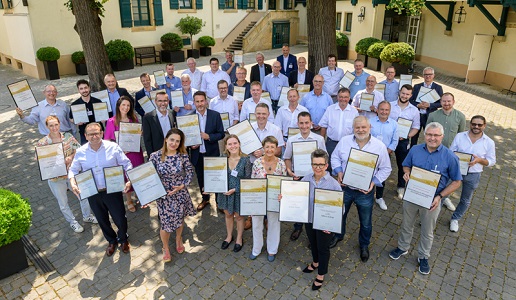Italian wine cooperatives awarded in Germany

Thanks to the selection for the Genossenschaftspreis, the cooperative award given annually by the German magazine Weinwirtshaft, we find out how Italian producer cooperatives are viewed in this important market.
Germany has always been a very important market for Italian wine, and after all, Italy's dominance of the German wine market remains firm, even if some market share was lost in 2022. We have 39 percent in value (1,071 million) and 37 percent in volume (5 million hectoliters out of 13.6 total), slightly below the 2020-21 period, but pandemic period data are difficult to read and often anomalous. (Data taken from The Numbers of Wine).
A market, the German one, that is very price-conscious and, perhaps for this reason, very suitable for the export of Cooperatives, which - according to an Ismea survey - 79% indicate Germany as the first export destination country within the EU, with a growing trend.
The importance of producer cooperatives is underscored by the focus devoted to them by German trade magazine Weinwirtshaft. Every year since 2010, Weinwirtshaft selects-with a competition of sorts-the best winegrower cooperatives from Germany, France and Italy. Created to monitor the health of German cooperatives, the selection has since expanded to include France and Italy, each nation with its own ranking. This year 650 wines were tasted, from 56 German, 48 Italian and 30 French cooperatives.
The rules require each winery to present six wines from the current vintages, among which there must be two base wines and one regional specialty: the winery with the best average rating wins.
As for Italy, we record a small "oddity": cooperatives from Alto Adige, traditionally strong, were given a separate ranking, probably to prevent them from racking up prizes and taking away from other wineries the chance to shine.
In the overall Italian ranking, the Terre del Barolo winery (Piedmont) rose to the top after a second-place finish last year, followed by Cantina di La Vis e Valle di Cembra (Trentino) and last year's winner Cantina Valpolicella Negrar (Veneto).
As for South Tyrol, Terlano winery won ahead of Termeno and Andriano wineries.
The best cooperative in central Italy was Codice Citra (Abruzzo), while Cantina di Venosa (Basilicata) placed best in southern Italy.
"The cooperative business model remains an important social factor for the small-scale wine industry, through which specialization is centralized," says Weinwirtshaft editor-in-chief Clemens Gerke. "It is exciting to see the growth of cooperatives from year to year, especially the regional specialties often surprise positively.
Leading the way in Germany is Württemberg.
Among German cooperatives, first and second place went to Württemberg wineries, Stromberg-Zabergäu and Collegium Wirtemberg respectively, followed by last year's winner Oberkircher Winzer in 3rd place and Kaiserstühler Winzergenossenschaft Ihringen in 4th place, both from Baden.
Loire at the top in France
This year, for the first time, first place among French cooperatives went to Alliance Loire, followed by La Cave des Hautes-Côtes (Burgundy) and Les Vignerons d'Uni Médoc (Bordeaux).
Below, we suggest wines selected by us at DoctorWine from the winning Italian cooperatives. To read the fact sheet, click on the name.
- Terre del Barolo, Barolo Rocche di Castiglione Arnaldo Rivera 2019
- Cantina La-Vis, Trentino Chardonnay Diaol 2019
- Cembra Cantina di Montagna, Trentino Müller Thurgau 2020
- Cantina Valpolicella Negrar, Amarone della Valpolicella Classico Collezione Pruviniano Domini Veneti 2019

 Italiano
Italiano





















